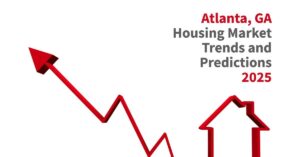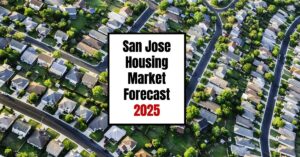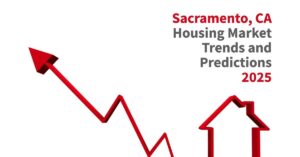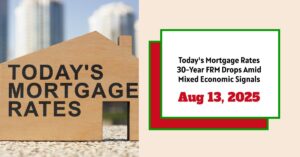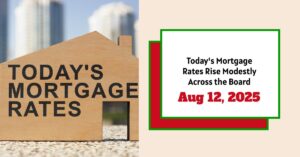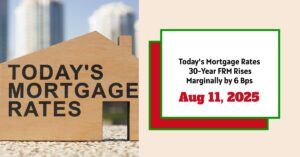Wondering what's going on with the Atlanta housing market in 2025? Let's cut to the chase: Right now, we're seeing more houses on the market in Atlanta, sales are up slightly, and prices are a bit lower compared to last year. It's a bit of a mixed bag, and I'm here to break it all down for you in plain English. So, let’s dive into what you need to know about buying or selling a home in Atlanta right now.
Current Atlanta Housing Market Trends: What's Happening in 2025?
Home Sales
Let's start with the good news. According to the latest data from the Atlanta REALTORS® Association, June 2025 saw 5,277 homes sold in metro Atlanta. That's an 8% increase compared to June 2024. This means more people are buying homes, which is generally a positive sign for the market. While higher mortgage rates (more on that later!) might scare some folks away, it seems like people are still finding ways to make deals happen.
Home Prices
Now, let’s talk money. While sales are up, home prices in Atlanta have seen a slight dip.
- The median sales price in June 2025 was $440,000, which is down 2.2% from June 2024.
- The average sales price was $556,500, a 1.2% decrease year-over-year.
So, what does this mean for you? Well, if you're a buyer, this could be a good thing! You might be able to snag a home for a little less than you would have last year. If you're a seller, it might mean adjusting your expectations slightly.
Are Home Prices Dropping in Atlanta?
Not exactly a drop per se, but a slight correction. The crazy price increases we saw during the pandemic boom are leveling out. We're not seeing a massive crash or anything, but prices are becoming a bit more reasonable. Factors like more inventory and higher mortgage rates are contributing to this. It's more of a stabilization than a freefall.
Housing Supply
This is a big one. Remember how everyone was complaining about not being able to find a house a year or two ago? Well, things are changing! Atlanta's housing inventory in June 2025 was 20,582 units. That's a whopping 36.8% increase from June 2024.
New listings also increased, with 8,871 homes hitting the market in June. However, this number is slightly down 8.4% from the previous month (May 2025), which could indicate a seasonal slowdown or sellers holding back to see where the market is headed.
A larger housing supply gives buyers more choices and can ease some of the pressure on prices.
Is Atlanta a Buyer's Housing Market?
Here's where it gets interesting. With more homes on the market, it leans more towards a buyer's market than it has been in recent years.
To measure this, we use a metric called “months supply”. This estimates how long it would take to sell all the homes on the market at the current rate of sales. In June 2025, Atlanta had 4.6 months of supply.
Generally:
- Less than 4 months: Seller's market (sellers have the upper hand)
- 4-6 months: Balanced market
- More than 6 months: Buyer's market (buyers have the upper hand)
With 4.6 months, we're in more of a balanced market, but trending towards a buyer’s advantage, especially compared to the intense seller's markets we saw in recent years.
Market Trends
Let's zoom out and look at some overall trends influencing the Atlanta housing market:
- Migration: Atlanta is still a popular destination. People are drawn to our job market, relatively affordable cost of living (compared to other major cities), and vibrant culture. This ongoing migration keeps demand for housing relatively high.
- New Construction: Builders are working hard to add more housing to the market, especially in the suburbs. This increase in new construction helps to ease the supply shortage.
- Economic Factors: The overall health of the economy plays a big role. Job growth, inflation, and interest rates all impact people's ability to buy homes.
- Seasonality: Real estate markets tend to be seasonal. Spring and summer are usually the busiest times for buying and selling, while things tend to slow down in the fall and winter.
- Interest rates: The Federal Reserve's monetary policy influences interest rates in the US. Interest rates affect the demand side of the housing market. The demand for buying homes will decrease when the interest rates rise and vice-versa.
Impact of High Mortgage Rates
Let's be real: High mortgage rates are definitely affecting the market. As of August 7, 2025, the average 30-year fixed mortgage rate is around 6.63%, according to Freddie Mac. The 15-year fixed rate is about 5.75%. These are significantly higher than the rates we saw a few years ago.
Currently, U.S. weekly averages as of 08/07/2025, the average 30-year fixed mortgage rate is around 6.63% and 15-Yr FRM is about 5.75%, according to Primary Mortgage Market Survey® by Freddie Mac. The 30-year fixed-rate mortgage dropped to its lowest level since April. The decline in rates increases prospective homebuyers’ purchasing power and Freddie Mac research shows that buyers can save thousands by getting quotes from a few different lenders.
Continued economic growth, along with moderating house prices and rising inventory, bodes well for buyers and sellers alike. According to various forecast, 30-year FRM rate will end 2025 between 6.0 to 6.5 percent. Borrowers should find comfort in the stability of mortgage rates, which have only fluctuated within a narrow 15-basis point range since mid-April.
Higher rates mean that it costs more to borrow money to buy a home. This can reduce the number of people who can afford a home, which can slow down sales and put downward pressure on prices.
However, it's not all doom and gloom! As Freddie Mac reports, “The decline in rates increases prospective homebuyers’ purchasing power“. Plus, experts are forecasting that “30-year FRM rate will end 2025 between 6.0 to 6.5 percent“, which could bring some relief to the market.
Metro Atlanta Housing Data for June 2025 (Overview)
Here's a quick summary of the key data points we discussed:
| Metric | June 2025 | Change from June 2024 |
|---|---|---|
| Residential Sales | 5,277 | +8.0% |
| Median Sales Price | $440,000 | -2.2% |
| Average Sales Price | $556,500 | -1.2% |
| Housing Inventory | 20,582 units | +36.8% |
| Months of Supply | 4.6 months | Significant Increase |
My Two Cents
From my perspective, the Atlanta housing market is in a period of transition. The wild ride of the past few years is calming down. We're seeing a more balanced market, which is ultimately healthier in the long run. While higher mortgage rates are a challenge, they're also creating opportunities for buyers who have been priced out of the market. I believe that if you're planning to buy or sell in Atlanta, now is the time to do your research, get pre-approved for a mortgage, and work with a knowledgeable real estate agent who can help you navigate the current housing market trends.
Atlanta Housing Market Forecast 2025-2026
What's going to happen with prices? The Atlanta housing market forecast is predicting a slight cooling trend in the near future. While we aren't expecting a crash, current forecasts suggest prices might dip a bit over the next year. Let's dive into the numbers and see what they mean for you.
First, let’s look at where we are right now. According to recent data, the average home value in the Atlanta-Sandy Springs-Roswell area is around $389,097. That's a decrease of 2.1% over the past year. This tells us the market has already started to soften a bit.
What the Forecast Says
Let's peek into the future using Zillow's forecasts. They give us a few different snapshots:
- Short-Term Dip (July 2025): Zillow predicts a 0.5% decrease in home values by July 2025.
- Further Down (September 2025): The slide continues with a projected drop of 1.6% by September 2025.
- One-Year Outlook (June 2025 – June 2026): Overall, the forecast for the year ending June 2026 is a decrease of 1.3%.
Here's a simplified table to make it easier to understand:
| Timeframe | Projected Change in Home Values |
|---|---|
| July 2025 | -0.5% |
| September 2025 | -1.6% |
| June 2025 – June 2026 | -1.3% |
Atlanta Compared to Other Houisng Markets in Georgia
It's interesting to compare Atlanta to other cities in Georgia. Most areas are showing similar trends, but with some variation:
| City/Area | July 2025 | September 2025 | June 2026 |
|---|---|---|---|
| Atlanta, GA | -0.5% | -1.6% | -1.3% |
| Augusta, GA | -0.1% | -0.8% | -0.9% |
| Savannah, GA | -0.4% | -1.2% | 0.4% |
| Columbus, GA | 0% | -0.5% | -0.5% |
| Macon, GA | -0.1% | -0.8% | -0.3% |
| Athens, GA | -0.1% | -0.5% | 0.8% |
| Gainesville, GA | -0.5% | -1.4% | 0% |
| Warner Robins, GA | 0.1% | -0.1% | 0.7% |
| Albany, GA | -0.4% | -1% | -0.6% |
| Valdosta, GA | 0% | -0.4% | 0.4% |
As you can see, while some cities like Savannah, Athens, Warner Robins, and Valdosta are expected to see modest gains by June 2026, most are facing declines similar to Atlanta.
What About the National Picture?
Nationally, the outlook seems a bit brighter. Lawrence Yun, the Chief Economist for the National Association of Realtors (NAR), believes “brighter days may be on the horizon” for the U.S. housing market. He predicts:
- Existing Home Sales will increase by 6% in 2025 and 11% in 2026.
- New Home Sales are projected to grow by 10% in 2025 and 5% in 2026.
- Median Home Prices are forecasted to rise by 3% in 2025 and 4% in 2026.
- Mortgage Rates should average around 6.4% in the second half of 2025 and 6.1% in 2026.
So, Will Atlanta's Housing Market Crash?
Probably not. While we're seeing a projected decrease, a crash implies a sudden and dramatic drop. The Atlanta market is more likely experiencing a correction – a return to more normal, sustainable levels after a period of rapid growth.
My Personal Take: The Big Factors
I believe a few things are driving this:
- Mortgage Rates: Higher rates make it more expensive to buy, slowing down demand.
- Increased Inventory: More homes on the market give buyers more choices, putting downward pressure on prices.
- Overall Economy: Economic uncertainty can make people hesitant to make big purchases like a home.
Looking Ahead to 2026
While a detailed forecast for 2026 specifically for Atlanta isn't available from Zillow yet, we can cautiously speculate. Given the national predictions of continued moderate price increases, Atlanta might stabilize or even see a slight rebound towards the end of the year. Much will depend on how quickly mortgage rates come down and how the local economy performs.
What Does This Mean for You?
- Buyers: You might have more negotiating power and find slightly lower prices.
- Sellers: Be realistic about pricing your home and prepared for it to stay on the market a bit longer.
Top Reasons To Invest In The Atlanta Real Estate Market?
Investing in the Atlanta real estate market offers a myriad of advantages and opportunities. Here are the top reasons why Atlanta is a compelling destination for real estate investors:
Economic Growth
- Thriving Job Market: Atlanta is a major economic hub with a diverse job market. It's home to numerous Fortune 500 companies and has a booming tech sector, creating a consistent demand for housing.
- Population Growth: The city's population is steadily increasing, attracting both young professionals and families, further fueling the demand for housing.
Affordability
- Cost of Living: Atlanta offers a relatively affordable cost of living compared to many other major cities, making it an attractive destination for those seeking quality housing without exorbitant price tags.
- Investment Opportunities: Investors can find properties at various price points, catering to both entry-level and luxury markets.
Steady Appreciation
- Price Appreciation: Atlanta has experienced steady and sustainable home price appreciation over the years, offering the potential for long-term investment gains.
- Historical Performance: The city has weathered economic downturns well, with real estate values generally holding up even during challenging times.
Diverse Neighborhoods
- Varied Neighborhoods: Atlanta boasts diverse neighborhoods, each with its own unique character, catering to different preferences and lifestyles.
- Growth Potential: Some neighborhoods are undergoing revitalization, presenting opportunities for investors to benefit from future development.
Strong Rental Market
- Rental Demand: Atlanta has a robust rental market, driven by its transient population and a consistent influx of students and professionals.
- Income-Producing Assets: Real estate can be a reliable source of passive income, making it an appealing choice for investors seeking cash flow.
Quality of Life
- Cultural Attractions: Atlanta offers a rich cultural scene with world-class museums, theaters, and entertainment options.
- Education: The city is home to renowned universities and schools, making it attractive for families seeking quality education.
Pro-Business Environment
- Business-Friendly Policies: Georgia is known for its business-friendly policies and incentives, which can positively impact the overall economic climate and real estate market.
- Investor-Friendly Laws: The state's landlord-friendly regulations make property management more straightforward for investors.
These factors collectively contribute to Atlanta's status as a dynamic and promising real estate market, making it a compelling choice for investors looking to benefit from both short-term gains and long-term stability.
Remember, investing in the Atlanta real estate market can offer a wealth of opportunities, whether you're a seasoned investor or new to the world of real estate.
Turnkey Real Estate Investing in “Atlanta, GA”
Discover high-quality, ready-to-rent properties designed to deliver consistent returns.
Contact us today to expand your real estate portfolio with confidence.
Contact our investment counselors (No Obligation):
(800) 611-3060
Read More:
- Top Reasons To Buy Atlanta Investment Properties in 2025
- Where to Buy Atlanta Investment Properties in 2025?
- Housing Market Trends: Big Investors Buy in Atlanta, Dallas, Charlotte, Houston
- CoreLogic Flags Atlanta and Spokane as High-Risk Housing Markets
- Detroit Overtakes Atlanta as Most Overvalued Housing Market
- Best Places to Buy a House in 2025: Up-and-Coming Markets
- Georgia Housing Market: Trends and Predictions
- Best Places to Live in Georgia for Families in 2024 and 2025
